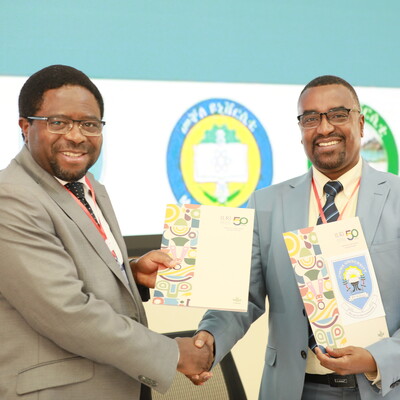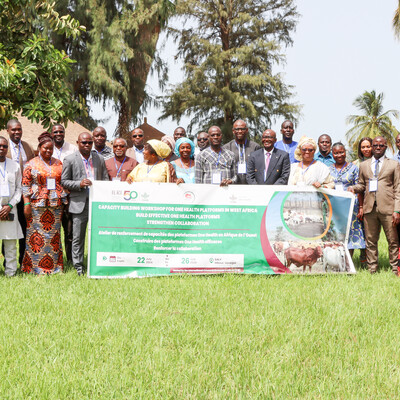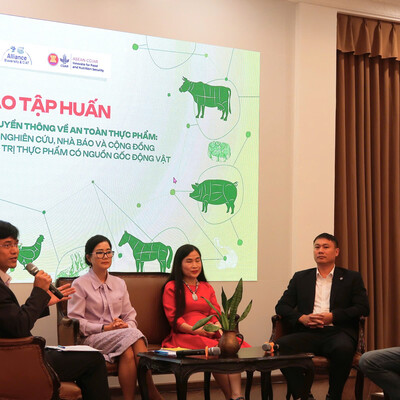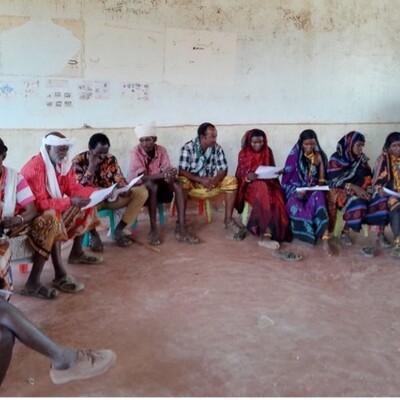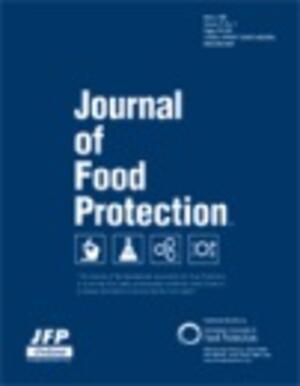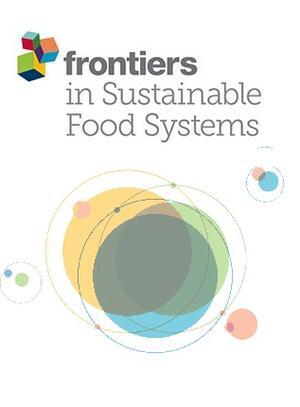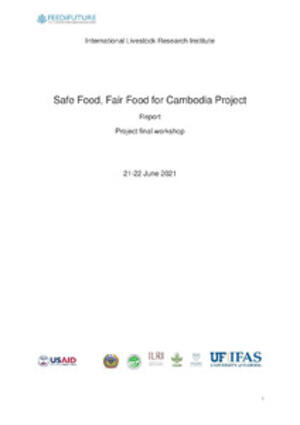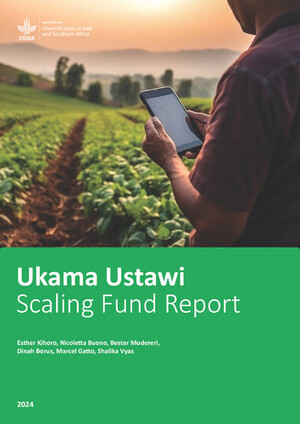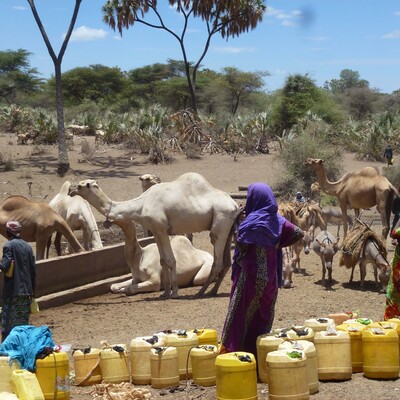
First continuous greenhouse gas measurements and validation of satellite derived land surface temperature estimates in East African drylands
by Thomas Dowling (King’s College London) and Lutz Merbold (Mazingira Centre, ILRI)
Since the beginning of August 2018, the International Livestock Research Institute’s (ILRI’s) Kapiti research station, approximately 60km South of Nairobi, has become a reference site for the validation of satellite derived land surface temperature (LST) in partnership with King’s College London (KCL). While LST is estimated with satellites across landscapes, countries and continents, these estimates need to be validated with ground truth measurements. Until now, no such validation sites existed in Kenya or wider East Africa. This has resulted in a knowledge gap with regards to how accurate the temperatures being used for climate change modelling and agricultural monitoring are for the region.
The only data point that global science currently has with regards to dryland LST is a single validation site in West African ‘Tiger Bush’. This site has found that failing to correct for wet-dry season vegetation cycling can lead to errors of up to 7% in estimation of LST from satellites. This sounds very little, however in reality this can translate to an over/underestimation of the actual land surface temperature of up to 8°C. Moreover, the thermal emissivity (the ability of a surface to radiate thermal energy) of changing landcover types, such as a dry grass and soil to fully green healthy grass, has so far been poorly characterized.

Land surface temperature validation tower on ILRI’s Kapiti Research Station. Observation site 1 of 4.
This research is of importance as LST products are used in applications such as climate change monitoring, pest and disease prediction and herbivory/agricultural yield prediction. The work carried out at Kapiti will look to cross-validate the finding of this error, update the thermal emissivity catalogue (of land cover types) and produce a bi-directional, seasonally dependent, correction algorithm for use on LST products that cover East Africa. This corrected product will be used to more accurately model crop pest and disease occurrence, with the results distributed to farmers across Kenya, Rwanda, Zambia, Malawi and Ghana.
To this end, with funding provided by the UK Space Agency (UKSA) International Partner Project (IPP) “Pest Risk Information Service” (PRISE) and the UK National Centre for Earth Observation (NCEO), we have now installed East Africa’s first, international standard, land surface temperature (thermal radiation) validation suite. The installed facility is a world-leading set of sensors that have been deployed across the research station. Each of the four measurement towers (Picture 2) contains various types of radiometers, including both commercially available instruments as well as instruments provided by NASA-JPL. In addition, the towers are equipped with digital cameras for cloud and vegetation monitoring. This allows us to measure the variety of land-cover types within the satellite’s view – an area of few square kilometers – and therefore understand how different vegetation types influence the temperature ‘seen’ by the satellite.
These tower measurements are complemented by ground surveys of different landcover type thermal emissivities (carried out by ILRI’s Mazingira Centre) and additional radiosonde (weather balloons) launched by Kenya Metrological Department (KMD). Whenever a significant change in landcover occurs, a new ground survey will be carried out in conjunction with the additional radiosonde launches. The measurements from the ground survey are then in effect ‘spread’ throughout the whole research area by using machine learning to classify how much of an aerial or satellite image belongs to each landcover class measured in the ground survey.
Why did NASA provide additional sensors? They have done so as once again the Kapiti validation site is the only one of its type available in East Africa and has the greatest number of towers in a concentrated space in sub-Saharan Africa. NASA has recently launched a new sensor (ECOSTRESS) that is now attached to the International Space Station. ECOSTRESS aims to examine vegetation stress due to water loss and requires ground-based validation data of the type provided by the instruments installed at Kapiti. Therefore, the Kapiti data will also be involved in the NASA-ECOSTRESS data validation processing chain.
Furthermore, the Land Surface Applications Facility of EUMETSAT (the operators of the metrological satellites that observe LST over Africa) have recently created a cloud-free LST product that promises to allow significant better monitoring of LST diurnal cycles. However, this cloud free product needs validating and therefore the Kapiti site will once again be able to contribute to an international validation effort; the benefits of which will be felt both within Kenya, East Africa and international science.
As well as LST, continuous observations of greenhouse gases such as carbon dioxide (CO2) and water vapor (H2O) are crucial to understanding how individual ecosystems contribute to (carbon release) or compensate for (carbon uptake) climate change. Deriving this essential data for whole ecosystems is a standard in developed countries but rarely achieved in the developing world. Up to now, only a few so-called ‘flux towers’ have been maintained running on the African continent. The flux towers that do exist are located in different ecosystems and in Southern, Northern or Western Africa. Therefore, the effort outlined here also includes a state-of-the-art flux tower observation station on ILRI’s Kapiti research station. This flux tower observes a common rangeland where both livestock and wildlife are present. Therefore jointly representing the only site of its kind in the global effort of green-house gas flux measurement.

Eddy covariance flux tower with wildlife at Kapiti Research Station
Carbon dioxide flux data is collected continuously at the landscape scale, supported by several other environmental parameters (e.g. temperature, radiation, humidity and soil moisture). With the generated data the involved scientists aim not only to quantify the net carbon dioxide exchange between the vegetation, soil and atmosphere, but also aim to understand the variability in carbon dioxide exchange throughout the year with changing seasonality and over several years to better understand the effects of climatic extremes, such as droughts and floods. The existing system can be upgraded to include methane flux measurements – another important greenhouse gas predominantly released by enteric fermentation and manure from animals, as well as methane production from termites.
The first results are expected after a minimum of six to 12 months of data collection. Initial testing of the sensors is currently being undertaken to ensure that they are operating as expected.
Acknowledgements: Funding for these activities was provided by: UK Space Agency (UKSA), the UK National Environmental Research Council (NCEO), PRISE (a Pest Risk Information SErvice) project, Kings College London and ILRIs Mazingira Centre. Both, Kings College London and ILRI’s Mazingira Centre is greatly thankful to the staff at Kapiti Research Station for providing access to the site and assisting during setup and maintenance of the installed systems and the numerous helpers from both of the involved institutions.






